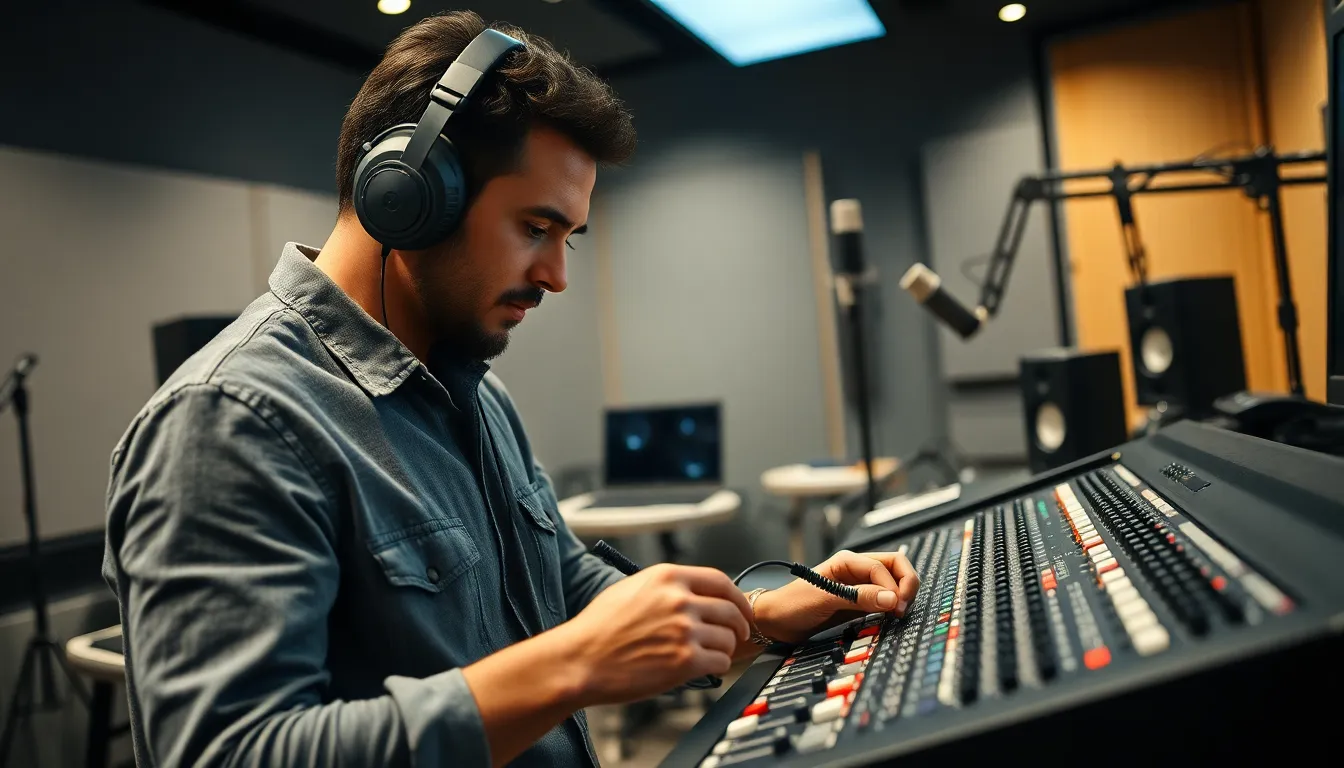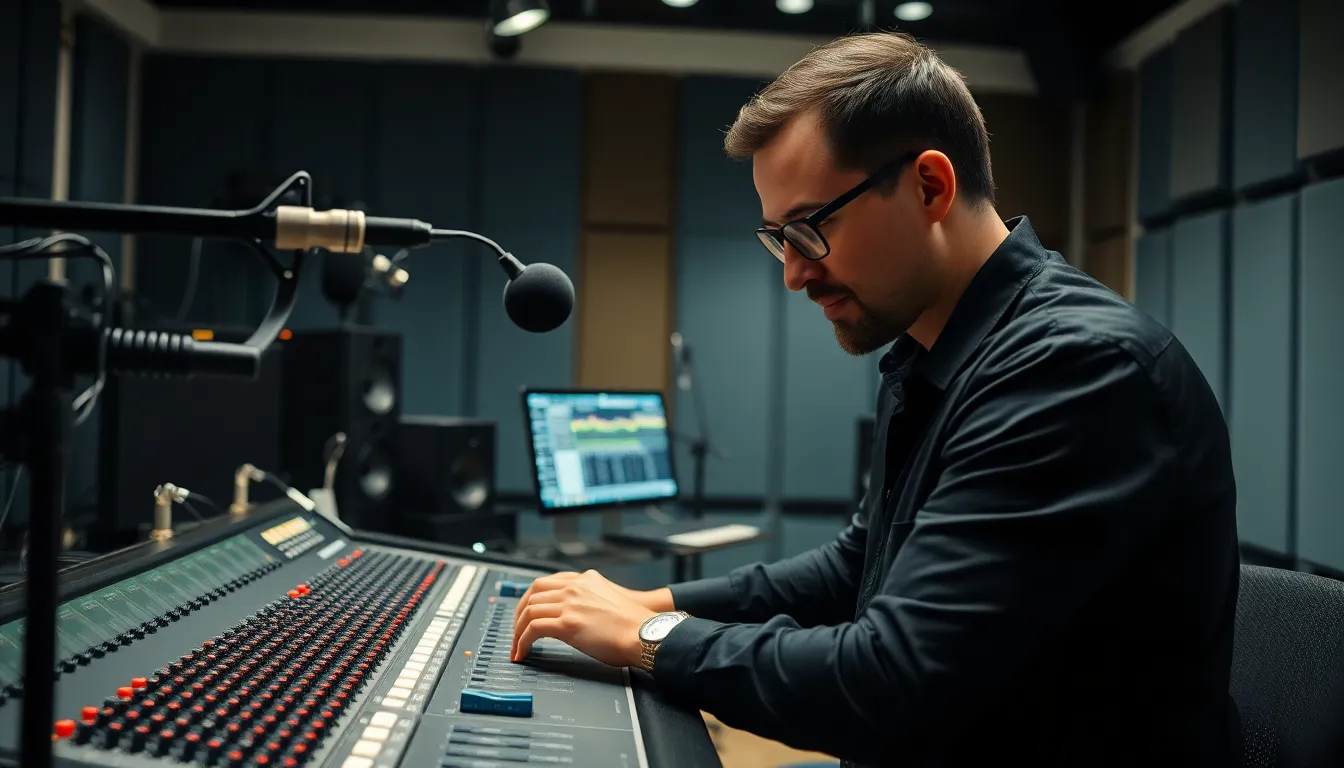In a world where sound often feels like it’s playing hide and seek, balanced audio technology steps in like a superhero with a cape. Imagine enjoying your favorite tunes or podcasts without the annoying buzz and hiss that can ruin the vibe. This technology isn’t just a fancy term; it’s the secret sauce behind crystal-clear sound that makes you feel like you’re front row at a concert—minus the sweaty crowd.
Table of Contents
ToggleOverview of Balanced Audio Technology
Balanced audio technology improves sound quality through its design, which reduces interference from external sources. This method utilizes three conductors rather than two, allowing the system to cancel out noise. Signals within the balanced cable travel as positive and negative phases. External interference affects both phases equally, making it easier to eliminate this noise at the receiving end.
Various applications benefit significantly from balanced audio systems, such as professional audio gear and recording studios. Equipment like microphones, mixers, and amplifiers often use balanced connections for optimal performance. Engineers rely on these connections to maintain audio integrity during live performances and recordings.
Using balanced cables creates a more stable audio environment. For longer cable runs, balanced connections prove to be crucial, as they can effectively transmit signals over distances exceeding 100 meters without degradation. This capability ensures consistent sound quality across extensive setups.
Optimal setups often incorporate XLR or TRS connectors, which are standard for balanced audio. These connectors provide secure connections and help maintain signal quality. Additionally, many high-end headphones and studio monitors support balanced audio technology, further enhancing listener experience.
Balanced audio technology plays a vital role in achieving clear, distortion-free sound. Its design effectively addresses noise and interference, making it indispensable in high-fidelity sound applications. Emphasizing the importance of this technology allows any audio enthusiast to appreciate its benefits fully.
How Balanced Audio Technology Works

Balanced audio technology efficiently enhances sound quality through its intelligent design. The technology utilizes a three-conductor system to reduce noise and interference.
Key Components
Balanced audio systems typically involve three main components: two signal wires and a grounding wire. Each signal wire carries the audio signal in opposite phases, which allows for effective noise cancellation. Equipment like XLR or TRS connectors play a critical role in ensuring a secure connection, thus preserving audio integrity. Additionally, professional microphones, mixers, and amplifiers often incorporate these components to maintain clarity and prevent distortion.
Signal Path
The signal path in balanced audio technology significantly influences the overall audio clarity. Audio signals travel through the two conductors; one carries the positive phase and the other carries the negative phase. This arrangement effectively cancels out electromagnetic interference that often disrupts sound quality. Signals remain strong over longer distances, often exceeding 100 meters, thanks to this design. In studio settings, balanced connections support high-fidelity sound, facilitating a clear listening experience without degradation during transmission.
Benefits of Balanced Audio Technology
Balanced audio technology offers significant advantages, particularly in sound quality and signal integrity. Its design enhances listening experiences across various applications.
Reduced Noise and Interference
Reduced noise and interference characterize balanced audio technology. Signals travel along two separate wires, allowing cancellation of external noise. Interference diminishes as cables extend beyond 100 meters, maintaining audio clarity even at long distances. Equipment like microphones and mixers rely on this feature to deliver pristine sound. Balanced connections effectively decrease hum and buzz that commonly affect audio systems. By employing shielded cables, users can minimize impact from electromagnetic fields. Overall, the noise reduction capability of balanced audio promotes a clearer listening experience, which is essential in both professional and consumer audio setups.
Improved Sound Quality
Improved sound quality is a hallmark of balanced audio systems. The arrangement of signal wires allows for higher fidelity sound transmission, preserving the nuances in audio recordings. Audio signals undergo less distortion, enhancing the overall listening experience. Equipment utilizing balanced connections delivers a more dynamic range, allowing listeners to experience intricate details within music and performances. Signal integrity maintains strength over longer distances, ensuring that sound remains consistent and clear. Balanced audio technology also provides a more robust sound stage, which is critical in professional audio applications. This quality enables music and soundscapes to feel more immersive and engaging, reinforcing why balanced audio is essential for high-fidelity experiences.
Applications of Balanced Audio Technology
Balanced audio technology serves various applications across different environments, excelling in both professional and home audio setups.
Professional Audio Settings
In professional audio settings, balanced audio technology plays a crucial role. Recording studios use balanced connections to maintain audio quality during recordings and live performances. Microphones, mixers, and amplifiers frequently utilize balanced cables to minimize interference. This technology ensures clarity and integrity, especially during long cable runs, often exceeding 100 meters. XLR and TRS connectors secure these connections, effectively reducing the risk of signal degradation. Equipment receiving balanced signals delivers a cleaner and more dynamic sound, which is essential for live concerts, broadcasts, and studio recordings.
Home Audio Systems
Home audio systems also benefit considerably from balanced audio technology. Audiophiles prioritize sound clarity, and balanced connections help achieve this goal. When high-end speakers or sound systems incorporate balanced inputs, they minimize unwanted noise and distortion. Users can appreciate the full range of their audio files, from subtle nuances to powerful bass. Setup often involves using devices with balanced output options, allowing for a superior listening experience. Improved sound fidelity results in a more immersive enjoyment of music and movie soundtracks, making balanced audio technology a valuable addition to any home audio configuration.
Balanced audio technology stands as a cornerstone for achieving superior sound quality across various applications. Its ability to minimize noise and interference ensures that listeners experience music and audio content with remarkable clarity. Whether in professional studios or home setups, the advantages of balanced connections are undeniable.
By leveraging the unique design of balanced cables, users can enjoy an immersive listening experience that captures the nuances of every performance. As audio technology continues to evolve, embracing balanced systems will remain essential for anyone seeking to enhance their audio experience. Investing in balanced audio technology is a step toward achieving the highest fidelity in sound reproduction.




